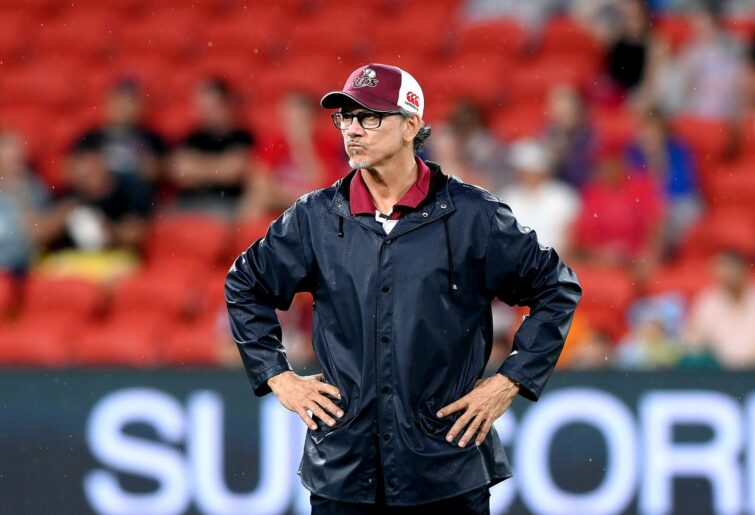Popeye
new author
Roar Rookie
Anyone from high-performance organisations will tell you that recruitment and training is key to long-term success. The Brumbies are a prime example.
Take Charlie Cale for one. You’d be forgiven for thinking that he came from nowhere to star in the first game of this season – no one starred in the Brumbies’ second game of the season. But he hasn’t materialised out of thin air. A sprinkling of games last year and the off-field development at the Brumbies have laid the platform for Cale to become a genuine starter. We have seen it consistently for years at the Brumbies, where young players get a few minutes here and there, then a few starts. All of a sudden, they change a game, score tries and everyone starts watching.
It is the beauty of the Brumbies’ system that young players are gradually tested over a period of time. Players are often given minutes at the end of games to allow them to grow in confidence and work on areas of improvement. They are developed to understand their roles so they don’t feel out of place when they do come on. Eventually, it all clicks, and they start to perform.
Watch every match of Super Rugby Pacific ad-free, live & on demand on the Home of Rugby, Stan Sport
Luke Reimer is another example. In 2021, he came off the bench five times and started once. In 2022, he had three starts and seven showings off the bench. Last year, he only started two games of 15, yet his impact and effectiveness only increased. There wasn’t any baptism of fire, only a slow burn. As a result, in a year where it looks like he will start in a much larger percentage of matches, he is ready, with confidence intact, and has a clear understanding of his role. Despite the Brumbies losing a player of such a high calibre as Pete Samu, they have a replacement who has already been moulded to fill the hole.
This process of bringing younger players through the system and exposing them gradually is ingrained in the Brumbies system. It is why they have been the most consistent Australian team for the last decade. Looking at the other Aussie teams, you can see how a lack of planning and player management has led to inconsistent performances.
In the hope of improving their player base, the Force brought Toni Polu, Issak Fines-Leleiwasa, Reesjan Pasitoa and Bayley Kuenzle over from the Brumbies where they had all had solid showings off the bench. However, at the Force, they haven’t allowed them to develop slowly, so have all had inconsistent performances.
The exception that proves the rule is Fines-Leleiwasa, who spent some time behind Ian Prior before proving that he could be the first-choice scrum-half. Despite his good performances the Force still decided to bring Nic White on board. If they manage Fines-Leleiwasa’s gametime and development correctly, this could an immense learning opportunity for him. If not, it could smash his confidence.
The issue with this arrangement at the Force is that they are often under the pump by the time Fines-Leleiwasa would be coming on. If he was still at the Brumbies, he would be coming onto the field when his side is in control and everyone knows their roles. It is much easier to play well in a good side, especially if that side is packed full of Wallabies. The question is, how do the other Australian sides emulate the Brumbies set-up? The Reds might be showing us how.
In Covid-ravaged 2020, the Reds won Super Rugby AU with a group of raw but talented young players. It’s been a mixed bag for them since then. Crucially though, the stars from round one and two of Super Rugby 2024 were all in that team from 2020, Tate McDermott, Harry Wilson, Hunter Paisami and Jordan Petaia to name a few. The years between have seen some pain. But that pain is necessary to embed a foundation for the team going forward.
It remains to be seen whether this will bear fruit under the new coaching regime, but even new coach Les Kiss has given credit to the foundation that Brad Thorn laid out for him. With some consistency in selection and performances, they should be in a place where they can slowly expose younger talent and develop them within their own system.

Queensland Reds coach Les Kiss. (Photo by Bradley Kanaris/Getty Images)
When you look at the Brumbies roster you can see a plethora of players that have been developed within their own system. Without too much exposure too early to young players, they have been able to grow their games sustainably. Players such as Ryan Lonergan, Tom Hooper, Charlie Cale, Nick Frost, Blake Schoupp, Lachlan Lonergan, Ollie Sapsford and Tamati Tua were all nowhere to be seen a few years ago. Going forward they will all likely be key members of the squad.
Any young player in Australia should see how this development pathway could benefit them. They might not get all the gametime they want in their first year, but that might be for the best in the end.